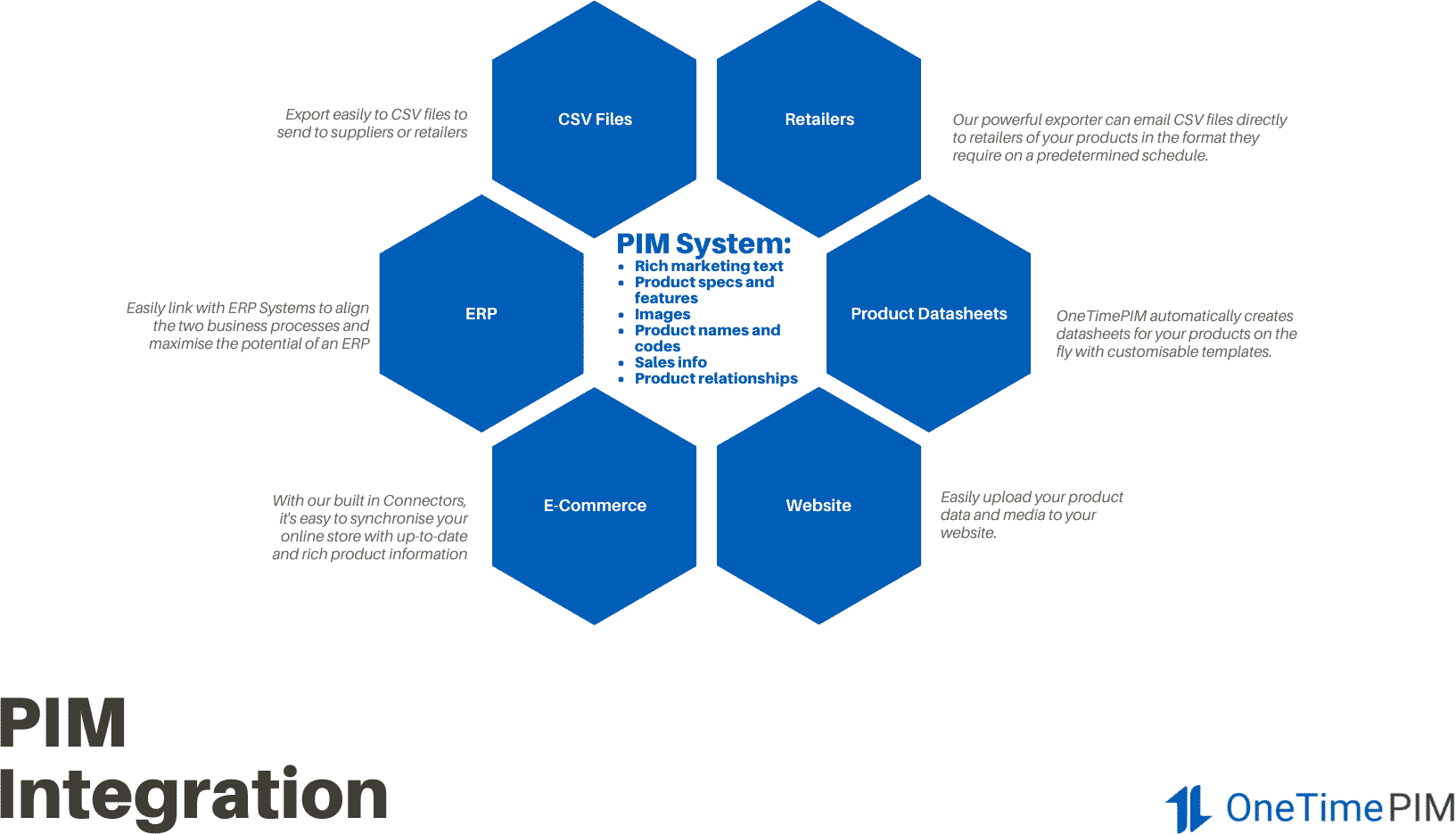ERP

🥊 PIM vs ERP: Strategic Partners, Not Rivals
🔄 Understanding the Distinct Roles in Your Business Ecosystem
Confused about how Product Information Management (PIM) and Enterprise Resource Planning (ERP) systems fit together? Let's clarify these critical business platforms and show why forward-thinking companies need both. Rather than competitors, these systems are complementary forces that, when properly integrated, create a complete product data ecosystem.
📊 PIM: Your Product Data Specialist
Think of PIM as your dedicated product content expert:
- 🎯 Single Focus: Exclusively dedicated to managing product information
- 🖼️ Rich Content Management: Handles descriptions, specifications, images, videos, and documents
- 🌐 Multi-Channel Distribution: Prepares and distributes product content to all sales channels
- 🔄 Attribute Relationships: Creates connections between related product characteristics
- 👥 Collaboration Tools: Enables marketing, sales, and technical teams to enrich product data
💼 ERP: Your Operational Backbone
ERP serves as your business operations command center:
- 📈 Business-Wide Scope: Manages finance, HR, inventory, manufacturing, and more
- 💰 Financial Focus: Prioritizes accounting, costs, and revenue tracking
- 🏭 Supply Chain Management: Handles orders, inventory levels, and procurement
- 📆 Resource Planning: Coordinates production schedules and material requirements
- 📊 Reporting Engine: Generates financial and operational analytics
🧩 Why Your Business Needs Both Systems
The fundamental difference lies in their purpose:
- ERP focuses on transactions, operations, and finance
- PIM specializes in product content, enrichment, and distribution
This specialization creates distinct advantages when used together:
- 🚫 Eliminate Redundant Data Entry: Enter core product data once in your ERP, enrich it in your PIM
- 🔍 Enhanced Product Discovery: PIM's specialized search and filtering capabilities far exceed ERP tools
- 📱 Channel-Ready Content: PIM prepares product information specifically for each sales channel's requirements
- 🖌️ Marketing Enrichment: Give marketing teams a dedicated environment to enhance product storytelling
- 🔄 Bulk Editing Power: Make sweeping changes across product families impossible in most ERPs
💪 The Integration Advantage
When properly connected, PIM and ERP create a seamless data flow:
- ERP → PIM: Core product data (SKUs, costs, inventory levels, basic specifications)
- PIM Enhancement: Marketing descriptions, rich media, channel-specific attributes
- PIM → Sales Channels: Web stores, marketplaces, print catalogs, mobile apps
- Sales Channels → ERP: Orders, transactions, customer data
🚀 The OneTimePIM Integration Promise
Our approach to ERP integration focuses on creating a frictionless connection:
- 🧩 Pre-Built Connectors: Ready-made integration with major ERP platforms
- 🔄 Bidirectional Data Flow: Maintain perfect synchronization between systems
- 🛡️ Data Validation: Ensure information integrity across platforms
- ⚙️ Custom Field Mapping: Connect even the most specialized ERP implementations
- 👨💻 Implementation Expertise: Our team handles the technical details for seamless integration
📈 Measurable Business Impact
Companies using integrated PIM and ERP systems report significant improvements:
- ⏱️ Time Savings: 70-80% reduction in product information management time
- 🎯 Accuracy: Near-elimination of product data errors across channels
- 🚀 Speed to Market: New products launched in days instead of weeks
- 📊 Data Completeness: 40% increase in product attribute completeness
Ready to transform your product information workflow with the perfect PIM-ERP partnership? Let's create a seamless data ecosystem that combines operational excellence with compelling product content! 🌐✨